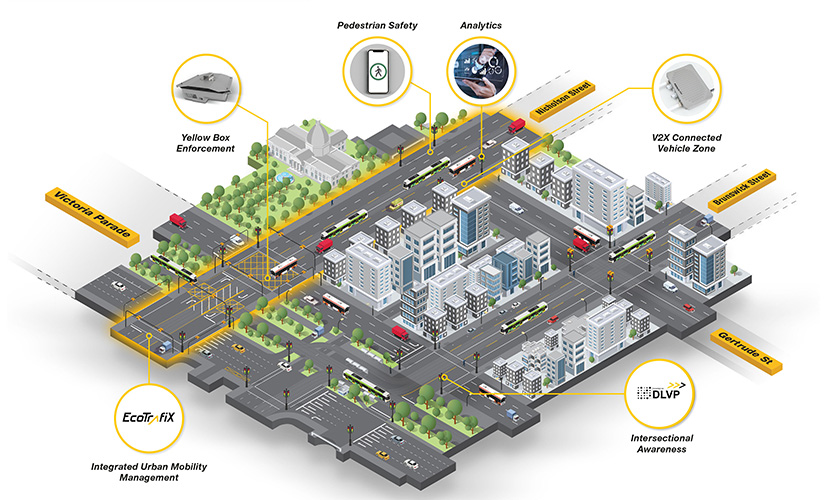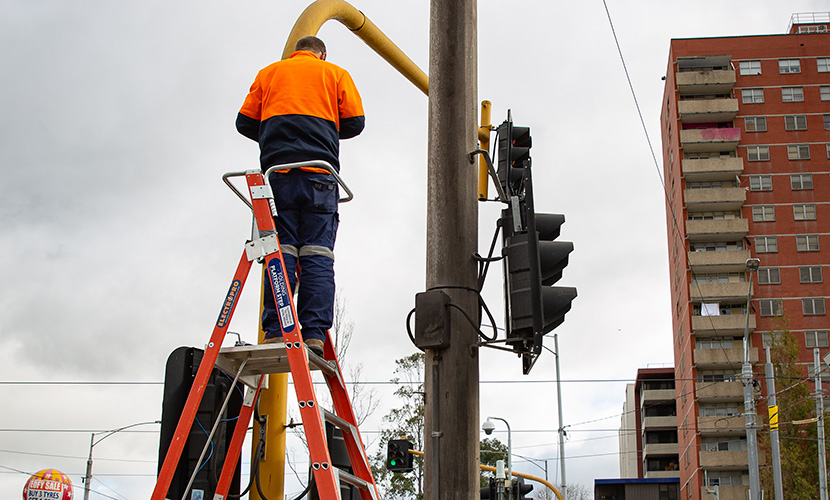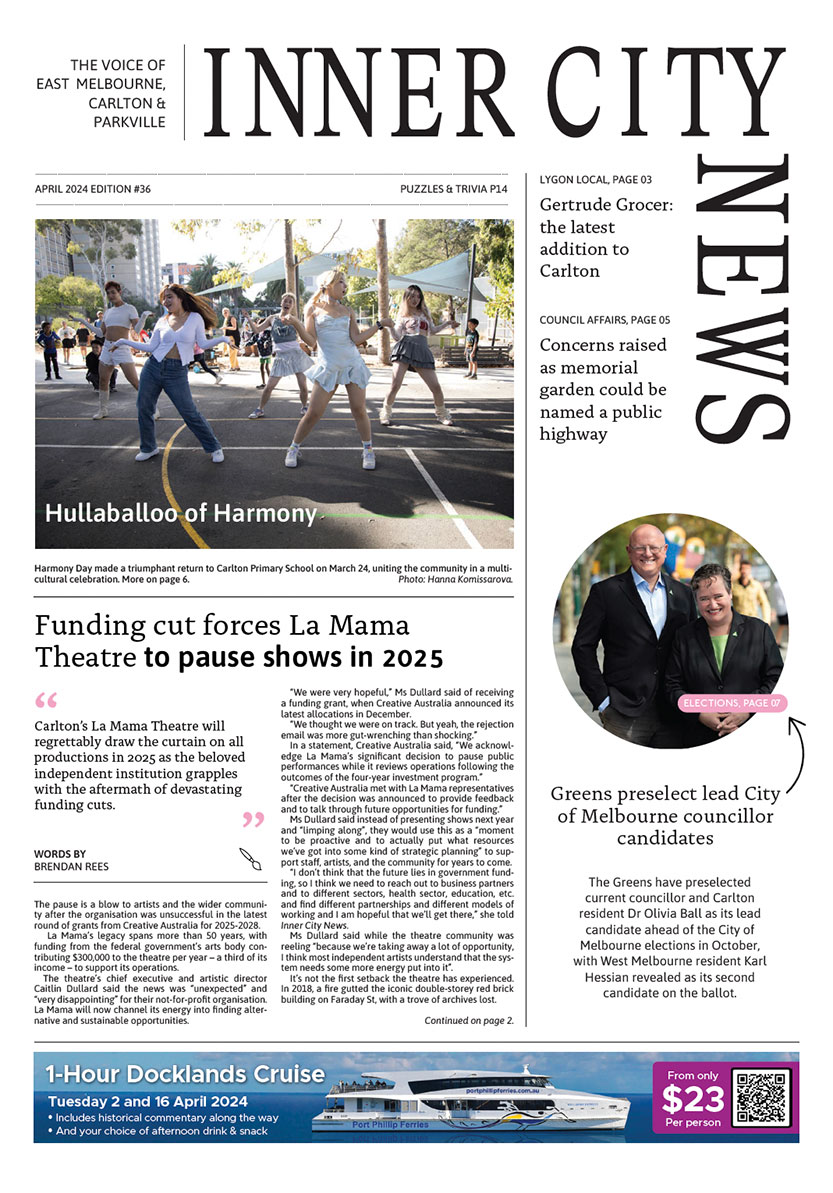Data capture improves local roadways
A two-and-a-half-kilometre stretch of Nicholson St from Alexandra Parade in the north to Victoria Parade in the south is hosting a world-leading traffic management system using the latest technology to reduce traffic jams and improve road safety.
An assortment of sensors, cloud-based artificial intelligence, machine learning algorithms, predictive models and real time-data is employed to improve traffic management – easing bottlenecks, enhancing road safety for all users and reducing emissions from clogged traffic.
The “Intelligent Corridor” at Nicholson St in Carlton was recently launched by the University of Melbourne, Austrian technology firm Kapsch TrafficCom and the Victorian Department of Transport.
Professor Majid Sarvi is the chair of transport engineering, professor of transport for Smart Cities, and the “Transport Technologies” program director at the University of Melbourne.
He is the founder and the director of the AIMES – Australian Integrated Multimodal EcoSystem, the world’s first and most extensive network, featuring more than 100 kilometres of inner Melbourne roads for testing emerging connected transport technologies on a large scale in complex urban environments.
Statistics show that in Melbourne, from 2006 to 2019, 492 people died from crashes at urban intersections – with more than half of these being pedestrians, cyclists or motorcyclists.
“Our Intelligent Corridor will use the latest technology to better manage traffic and make our roads safer for everyone,” Professor Sarvi said.
Kapsch TrafficCom executive vice-president for Asia Pacific Mathew McLeish agreed with Professor Sarvi’s comment that one of the significant issues at the Nicholson St intersection was vulnerable users’ safety.
“If a cyclist or pedestrian is approaching the intersection on a green light, where a car is not stopping and is running the red light, data from our TrafficCom’s connected mobility platform could alert all parties to a pending incident,” Mr McLeish said.
“It is ubiquitous to see pedestrians staring at the phone when walking … in future, we could have an app on the phone that alerts them that they are about to step out in front of a car.”
Mr McLeish pointed out that part of the road at the corner of Nicholson and Gertrude streets was occluded and pedestrians crossing the intersection were not always visible.
“[The new traffic management system] could be developed to ‘tell’ vehicles at this corner that there are people on the crossing they can’t see until they are on top of them. It gives the driver notice to proceed with caution,” he said.
Congested Melbourne is broken up into traffic corridors running parallel. For example, Nicholson St and Punt Rd move traffic from north to south while vehicles travelling east-west use Victoria and Alexandra Parades.
“If a corridor becomes congested and a parallel one isn’t, then communicating with vehicles tells the driver they have an alternate route to divert to,” Mr McLeish said.
This means you increase the speed and reduce the stop-start traffic, which has a tremendous impact on the environment.
“You get an improved transport user experience, e.g. the driver doesn’t get upset at the holdup. People are happier that they got to their destination more efficiently and achieve better air quality outcomes.”
The Intelligent Corridor project is designed to collect before-and-after data to demonstrate its effectiveness. At the same time, its performance will be fine-tuned to improve outcomes on an ongoing basis over the next three years. This data capture will provide crucial evidence for implementation in other cities.
Victorian Minister for Roads and Road Safety Ben Carroll said the Intelligent Corridor was an important and exciting step for Melbourne.
“The University of Melbourne’s academic expertise and technological capability, combined with the commitment of the Department of Transport and industry partners, create the ideal conditions for developing a safer, smarter, and more accessible transport future for Melbourne,” Mr Carroll said •

Carlton language school championed by Ukrainian refugee




 Download the Latest Edition
Download the Latest Edition